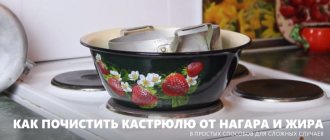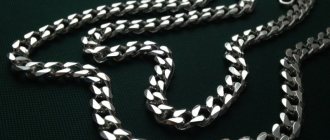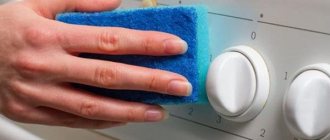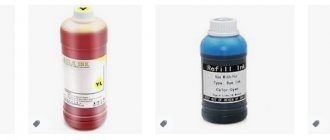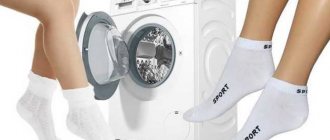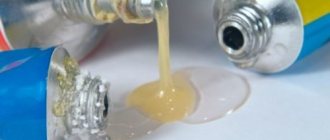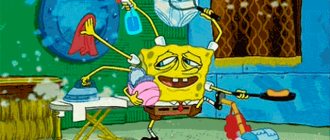Clean water for the human body is, if not everything, then a lot. Without fluid, the proper functioning of organs and systems is impossible. It seemed that in order to drink water, it was enough to simply open the water tap. However, not everything is so simple, and city networks do not provide adequate cleanliness to the water. Despite the cleaners used, it still contains harmful impurities. That is why we tried to figure out how you can purify water at home without buying a filter.
How to make a water filter at home
High-quality purification of tap water is impossible without the use of special filters, which, by the way, are not too difficult to make with your own hands. This device will allow you to purify drinking water from the tap, making it truly healthy.
To create a filter you will need the following things:
- cotton wool, gauze and textiles;
- paper napkins;
- coal and sand;
- grass and lutraxil.
Devices made from such materials purify water; the main thing is to take into account the fact that individual components act differently and, therefore, have different areas of application:
- filters made of paper and gauze perform their functions well, however, they are not very durable;
- devices with sand or gravel work much better;
- Lutraxil, in principle, is considered the most durable and effective.
You can make a filter with your own hands this way:
- Take a plastic bottle and cut off the bottom.
- Cut a hole in the lid of the plastic bucket.
- Place the bottle neck down in the resulting hole.
- Then you can fill the filter with the selected filler.
- To ensure that the edges of the bucket and bottle fit snugly against each other, it is enough to sand them with sandpaper or put a rubber seal on them.
This is perhaps the most primitive type of filter; folk craftsmen also create more complex designs that function perfectly and perform no worse than store-bought ones.
Is it good to freeze water?
Freezing is a popular, most effective and efficient cleaning method today. It has been proven that melt water contains much less impurities and harmful substances than from the tap. It restores the body, improves performance and gives strength, helps with allergies, dermatitis and skin itching, with stomatitis and asthma.
To freeze, pour water into a saucepan with a lid and a plastic container, leaving some free space at the top. You cannot use glass containers; it is not recommended to take plastic bottles, as they are hazardous to health.
A suitable option would be special freezer bags or containers made of high-quality food-grade plastic. These dishes are convenient to use for freezing and storing food or water. In addition, high-quality plastic dishes are easy to wash and, if necessary, can be heated in the microwave. At the same time, food-grade plastic is safe for humans.
To get the maximum benefit from melt water, when the water in the container freezes halfway, drain the unfrozen part. And the remaining ice can be melted and used as drinking water. Freshly defrosted water is considered the most useful and healing.
How to purify tap water at home
Purifying water at home is not as labor-intensive as it might seem at first glance. As a rule, most people use a water filter for this purpose, of which several varieties are known:
- on-pipe, which is located directly on the pipe;
- a jug into which you need to pour a certain amount of water;
- tabletop, having an individual faucet that supplies tap water directly into the glass;
- devices for reverse osmosis, which have not one water filter, but several.
There are several home methods that allow you to effectively purify water yourself:
Boiling
It does a good job of cleaning the liquid from harmful impurities, however, such exposure should last at least 20 minutes. In addition, this type of water purification has a number of disadvantages, including:
- inability to remove chlorine and its compounds;
- sedimentation of salts on the walls of the dishes, which increases the level of nitrates;
- In principle, such water has no benefit.
Advocacy
Capable of clearing liquid if lasts for at least 8 hours. This way you can clean the water from chlorine, and heavy metals will precipitate, which you just need to drain into the sink.
Salt
Using salt involves dissolving a tablespoon of this mineral in 2 liters of water, and after just half an hour, the water will become clean, free of heavy metals. Unfortunately, daily consumption of such liquid is not recommended.
Silver
Silver has been known for its antibacterial properties for a very long time. It is enough just to put a spoon made of this metal in a bowl for eight to ten hours to receive purified life-giving moisture.
Rowan fruits
An ordinary bunch of rowan is capable of purifying water; it is enough to place it in a container with liquid for three hours to obtain a pure product.
General Tips
In some cases, one method is not enough ; multi-stage cleaning is necessary. This is especially true for disinfection using:
- silver,
- iodine,
- herbs
After the destruction of pathogenic microflora, the purified substance requires additional processing. It is necessary to remove microbial decay products and ions from it. It is advisable to use an activated carbon filter for this purpose.
To find a suitable water purification method, you need to know which pollutants are present in the greatest quantities.
Before you begin household post-treatment of tap or natural water, it is worth collecting information about its composition.
The ideal option is laboratory analysis or household tests. Such data will help you navigate in choosing the right water purification method.
Important! If the same container is used for cleaning and disinfection, it must be washed periodically. In the light, water “blooms”, that is, green algae appear in it, which remain on the walls of the vessel and deteriorate the quality of each subsequent portion of water.
Water purification by freezing
Freezing is not only a method that allows you to purify a liquid from harmful compounds, it is a way to increase its quality several times. In this case, it is saturated with oxygen and loses salts and substances unnecessary for the human body.
The following stages of freezing water can be noted:
- The water should settle a little (for half an hour), after which it can be poured into a plastic container and placed in the freezer.
- When the liquid is covered with ice around the edges, you can remove the vessel.
- Now you need to drain the liquid that has not yet frozen, it is in it that dangerous compounds accumulate.
- The frozen liquid must thaw at room temperature, after which it can be used.
Separately, it is worth noting the undeniable advantages of such a liquid:
- increasing the resources of the human body;
- removal of cholesterol and salts;
- increasing the body's resistance to viruses and diseases;
- antiallergic effect;
- rejuvenation of the body.
Water purification with silicon
The leading position in drinking water purification at home is occupied by the use of silicon. The procedure is quite simple and usually does not cause difficulties.
The whole process goes like this:
- pour water into a glass or enamel vessel;
- omit silicon;
- cover the container with gauze;
- leave for several days, avoiding direct sunlight.
Silicon has a beneficial effect on the liquid, disinfecting it, and therefore the following methods of its use can be noted:
- gargling and mouthwash;
- application to skin;
- watering indoor and garden crops;
- use for cooking.
Separately, it should be noted that black mineral should not be used to cleanse liquids. In addition, it is not recommended to boil such water.
LiveInternetLiveInternet
Tap water is considered safe, but many still prefer to “play it safe” by installing additional water filters or boiling it before drinking.
You can only find out how safe the liquid you drink is in a laboratory.
However, some signs of poor quality water can be determined by eye and thanks to the olfactory and taste receptors.
What's wrong with tap water?
Drinking tap water is undesirable and sometimes even dangerous. It contains too many chloride compounds. According to standards, chlorine should be up to 0.5 milligrams per liter of water. This amount is considered safe for humans and at the same time effective in the fight against bacteria and microbes.
Since 1904, humanity has been chlorinating water to protect against infections. Unfortunately, this is not an ideal solution - over 50 years of living with tap water, a person drinks 16 kilograms of chlorides, 2 kilograms of nitrates and 2 tablespoons of aluminum.
There is often rust in such water - water pipes in most cases are old and metal, iron oxide dissolves in water and is present in the form of small particles. The direct result of drinking such water is kidney stones.
Tap water may be mixed with sewerage. According to the Russian Association of Water Supply and Sanitation, the wear and tear of water supply systems in Russia is approximately 58%. Sewer and water pipes are laid side by side, in the same boxes, and they can rot so much that when you open the tap, you will see brown water flowing. You should absolutely not drink it.
In addition, the quality of tap water depends on its hardness - the amount of calcium and magnesium salts, as well as impurities of iron and other minerals.
You should not drink tap water if:
– the water is cloudy; – if the shade is greenish, rusty, yellowish or any other; – if the filter with a replaceable cassette has turned yellow (this may be due to worn-out pipes and, as a result, rust and iron getting into the water); – the water has a specific smell; – after the water has settled, you see abundant sediment; – the water has an unpleasant taste.
How to purify water at home?
I think it is no longer a secret to anyone that the water that flows from our tap does not have the quality and purity that our body needs. If you have a filter, all you have to do is change the cartridges regularly to be sure that the water you drink is extremely healthy.
But, just so you know, we can purify water at home without spending a lot of money on filters and cartridges, but using fairly simple methods.
The quality of drinking water can be improved at home in several ways:
❧ Advocacy. You need to pour tap water into a glass container and let it sit for six to seven hours. During this time, volatile chlorine, along with other volatile impurities, will evaporate (it’s good if you periodically stir the water - this will help the “volatilization” processes occur more intensely).
However, heavy metal salts will not go away from settled water; at best, they will settle to the bottom. Therefore, when you use this water, pour out 2/3 of its contents without shaking, so that the sediment at the bottom does not mix with more or less purified water. ❧ Filtration. Pass the water through any filter. This can be a filter jug with a replaceable cassette, a faucet attachment and a filter for the cold water riser. There are many types of water filters on the market, and prices vary widely. When filtering water at home with capacitive filters, the main thing is to change the filter on time. Be sure to pay attention to the characteristics of the filter: how many liters of water it can purify, and control this amount.
If you do not change the filter in time, then the harmful components accumulated in it will go into the water being purified, that is, the water will not only not be purified, but the harmful components accumulated by the filter will also be added to it.
It is best to filter water at home with multi-level filters, but they also have serious prices. Using such a filter, water is first purified from mechanical impurities, sediments, chlorine, colloidal solutions and iron oxides. And then, thanks to the reverse osmosis membrane of the filter, bacteria and viruses are removed from the water.
Multi-level filter purifies water by 99%. This figure is much higher than that of chlorinated water, not to mention the disadvantages of chlorination given above. Water purified by such a filter is close in composition to spring water.
❧ Boiling . To boil water, use a regular kettle, not an electric one: the water will boil more slowly, but there will be much less scale. For cleansing, simple boiling is generally sufficient. You need to boil water for at least 10-15 minutes. Only in this case a significant part of the microorganisms dies.
However, this method has its drawbacks. Our water often contains salts of heavy metals. When boiling, water evaporates and the concentration of salts in it increases. They are deposited on the walls of the kettle in the form of scale and lime and then enter the human body.
❧ Freezing. This method will not purify large volumes of water, but it will be really clean. Pour tap water into plastic bottles (not glass bottles and jars!) Fill it with water, not reaching 1-2 cm to the edge, to leave free volume, since water increases its volume when it freezes. Remember glass water bottles that burst in the cold? And put the bottle in the freezer. When about half of the water in the bottle has frozen, drain the rest, remove the bottle with ice from the freezer and let the ice melt naturally.
Freezing is used mainly to remove excess salts from water. This method is based on the principle that pure water freezes at a higher temperature faster than water containing salts. When pure water freezes first, what remains between the ice crystals is a so-called brine, that is, a mixture of water and salts. Accordingly, the “brine” is drained without allowing it to freeze, and clean ice is melted, obtaining purified water. True, if the freezing temperature was too low, it may happen that not only pure water, but also the “brine” freezes.
Make sure that the ice in the bottle is transparent. Cloudy ice should not be used as it may contain harmful substances.
❧ About cleansing with silver. Silver ions, due to their bactericidal effect, perfectly purify water. You can use any silver item, preferably 999 fine: put it in a container of water and leave it overnight or for 8-10 hours.
Even an ordinary silver spoon dipped into a reservoir of water can improve its properties.
However, silver ions accumulate, as a result of which an excess of silver may occur in the body, and this will negatively affect metabolism. So try to consume not only “silver” water.
❧ Cleansing with activated carbon. Activated carbon is used in most filters used for water purification. After passing through it, the taste and smell of water improve, since it adsorbs most of the harmful impurities contained in the water.
You can make something like a filter yourself: just place activated carbon tablets (calculated at 1 tablet per 1 liter of water) in a bag made of cloth or gauze, put it in a container and pour tap water into it. It is enough to keep the coal in water for 12 hours for the water to become purified. This carbon filter needs to be changed 1-2 times a week. ❧ Cleansing with iodine. Along with activated carbon, many purification systems also contain iodine. It has a detrimental effect on pathogens found in fresh water.
It works most effectively if the water is at room temperature or hot. If the collected tap water is clear, then 5 drops of iodine will need to be added per 1 liter; if it is cloudy, then 10 drops. The water sits for half an hour, then you can drink it.
❧ Silicon purification. Silicon, with its germicidal, antibacterial and anti-inflammatory properties, is the best natural filter for tap water. Silicon has a positive effect on the functioning of the gastrointestinal tract and metabolism, removes toxins, carcinogens and other substances harmful to health from our body. You can purchase silicon in the pharmacy chain and in online stores/pharmacies.
The silicon is pre-washed well, placed in a container, and filled with water. Cover the jar with gauze and place it in the light, but away from direct sunlight, and leave for 2-3 days (at least a day). Calculate the size of a silicon stone 3-10g per 1-5 liters of water. And do not drink the water to the bottom, carefully pour it into another vessel, leaving 3-5 centimeters of water with sediment. Once a week it is necessary to clean the silicon crystals from plaque.
If there is no flint in the house, then water can be infused with Jerusalem artichoke. It has the highest percentage of silicon among vegetables - 8.1. The second place in the amount of silicon is occupied by radishes. It contains slightly less silicon - 6.5%.
❧ Cleansing with shungite. Recently, water purification with another stone called shungite has become popular. It is recommended to purchase large stones, then they will not need to be replaced with new ones, although, of course, once every six months they need to be thoroughly cleaned with a brush, a hard sponge or sandpaper.
Shungite water is prepared as follows: a 100 gram stone is placed in a liter of water (if you need more, then take more than one stone), the shungite water is infused for 3 days, no more, after which it is drained in the same way as when preparing silicon water.
Shungite water has contraindications: a tendency to cancer, blood clots, high acidity and diseases in the acute stage.
In which countries is it possible and in which countries is it not possible to drink tap water?
There are many states that monitor water quality throughout the entire water cycle. For example, in Holland they do not use chlorine at all, and in Austria or Switzerland about 90 percent of drinking water is chlorine-free.
In Finland you can also drink water straight from the tap. At treatment plants, it is treated with ferrous sulfate, then exposed only to ozone for disinfection. In France, water is also treated with ozone, passed through sand filters, then ozonated again and purified using granular activated carbon filters. Authorities provide tax incentives to those who do the best job of cleaning water. In Italy you can drink water not only from the tap, but even from a fountain on the street. The quality of water in the country is checked regularly. The highest standards apply to tap water in Germany. Modern treatment facilities have been installed throughout the country. The non-profit organization Water.org annually publishes a list of countries where drinking tap water is not recommended. The top three most dangerous countries are Afghanistan, Ethiopia and Chad. Things are not going well in Ghana, Rwanda, Bangladesh, Cambodia, Laos, India and Haiti. based on materials from www.aif.ru, myvklive.ru
See also:
Water during meals: to drink or not to drink?
Why do we need water?
When and how to drink water?
Water purification with activated carbon
Liquid purification with activated carbon has been used for quite a long time, including in store filters. At home, having several packs of these tablets on hand, you can completely clean the liquid yourself. It is not for nothing that the filter element in many designs is carbon compounds, because it is capable of accumulating various odors, as well as collecting harmful substances.
There are several rules for coal water purification:
- per liter of water you need to take one tablet of coal;
- pack it in a gauze bag that needs to be tied tightly;
- lower this container into the liquid;
- leave overnight or for at least 8 hours;
- Now you can use the purified liquid for its intended purpose.
Cleansing with silver
Silver contains ions, actively purifying water. It has bactericidal properties, so to clean, pour water into a large glass container, place a silver item (999 standard) in the middle and let the water sit (overnight). Avoid constant consumption of silver water, because... silver can accumulate in the body, which can lead to irreversible consequences.
Tourmaline balls for water purification
Tourmaline balls are a fairly advertised product today that allows you to purify water. They have the ability to improve the taste of water and create a special biological field inside its molecules, which significantly improves the quality of the latter.
This ability of tourmaline is due to the fact that they have the ability to charge liquid through weak generation of electric current. Even bathing in such moisture allows you to start the processes of renewal of skin cells, not to mention using it internally, which allows you to remove excess fats, lift your spirits and rejuvenate the body as a whole.
By using tourmaline balls, you can significantly saturate the liquid with oxygen. It is not difficult to use them; you just need to put the mineral in a warm liquid and leave it there for a while. After use, it should be thoroughly washed and dried. It is worth noting that the warmer the water, the higher the cleansing effect of tourmaline balls.
What types of drinking water contaminants are common?
Depending on what substances are contained in excess quantities in water, appropriate purification methods and filtration options are selected. The following types of water pollution are considered the most common:
- mechanical impurities – sand, sludge;
- biological contaminants - bacteria, viruses, fungi, human waste;
- pollution with organic (pesticides, phenols) and inorganic substances (salts, acids, alkalis);
- excess content of various chemicals - iron, chlorine, manganese, etc.;
- excess content of bicarbonates and sulfates , which causes an increase in water hardness;
- mixed pollution , which may include mechanical impurities and an excess of chemical elements.
If water is sent to a laboratory for analysis, then most often mixed contaminants are detected, which can be dealt with using a set of measures for purifying tap water and various filters.
How to remove fluoride from water
Purifying water from fluoride impurities is of no small importance, because modern research shows that its excess does not have a very beneficial effect on the human body. Even though it has a beneficial effect on the condition of human teeth and bones.
However, an excess of this substance can cause various health problems, including the condition of teeth and their enamel, as well as the human nervous system. According to the recommendations of the World Health Organization, a fluoride content of not more than one milligram per liter is considered the norm. However, studies show that this figure is overestimated in urban pipes.
You can remove fluoride from water at home in this way:
- take water into a non-metallic container, the liquid should be cold;
- Now the container should remain open for some time so that the chlorine compounds disappear;
- after this, you can cover the bowl with a lid and leave it like that for 8 hours;
- Now the liquid can be consumed, however, the sediment from the bottom must be poured out.
In addition, you can simply boil the liquid for 15 minutes, which will also remove fluoride from it.
So, why is Aquaphor more effective?
To be completely honest, the technology of most manufacturers of household water filtration systems has not progressed much over the past 30 years. Jug filters, as a rule, use the same classic sorbent: activated carbon and ion exchange resin.
Their combination is capable of removing organic matter, petroleum products, chlorine, and heavy metals. But there is a nuance. Water tends to form channels. Passing through the sorbent, it quite quickly forms “loopholes”, channels between the coal and resin granules. And it flies through such channels, practically unrefined, whistling straight into our mug.
And so Russian chemists from Aquaphor really took care of this problem - and finally solved it! They developed and patented a special fiber, Aqualen-2. Firstly, it removes heavy metal ions from water well and prevents active silver ions, which kill many (but not all) bacteria, from being washed out of the sorbent.
Secondly, and even more importantly, Aqualen-2 binds granules with coconut charcoal and ion-exchange resin into a single composite - so that the sorbent itself maintains its structure and shape. And water cannot break through channels in it. It is simply forced to be cleaned thanks to the “Aqualene coupling” of sorbent granules. Which, by the way, are 1.5-2 times smaller than those of competitors. Which is also good, because the finer and more uniform the composition of the sorbent, the higher its cleaning properties.
So that all this does not look unfounded, you can simply look at the results of a real opening of cleaning cartridges made of the same material on Habr. The insides of filters that did not perform well in the methylene blue and rust tests literally look like piles. And the Aquaphor sorbent looks like a nice Easter cake (it holds its shape), and the Aqualen-2 fibers are clearly visible in the photo.
And you can clearly see where Aquaphor retained the “blue” - at the very top of the filter (this is the top part of the filter cartridge), i.e. at the farthest approaches to cleanliness. And therefore, we can almost boldly (with a slight fear that one of the mentioned manufacturers will want to hit us on the head) declare: in experiments, filters with the letter “B” have shown their inability to turn dirty and actually toxic water into absolutely clean and harmless water.
This means that buying such a filter for your home means only one thing: before the filter, you drank chlorinated, untreated water, and with such filters you will continue to drink it. Although with a lower concentration of rubbish. Just spend money on an advertised brand.
Replaceable modules after opening
How to remove chlorine from water
Modern water supply supplies people with liquid into their apartment after it has been purified using chlorine-containing substances. However, there are often cases when their concentration exceeds permissible standards.
The most accessible method is the usual settling of water, which is chlorinated at a waterworks. To implement this method, you need to leave the liquid in the container for a day, after which the part of it that settles (about 200 ml) must be poured out without using it for drinking or household needs.
It is worth noting that filtered moisture, for the purification of which specialized cassettes are used, does not contain harmful chlorine compounds in its composition. Unfortunately, it cannot be stored for a long time, because various microorganisms begin to actively multiply in it.
Boiling
Boiling is considered the simplest and most affordable way to purify household water. Moreover, if the water is not purified through filters, boiling is a prerequisite for its healthy consumption. Boiling helps clear water of many types of impurities. Under the influence of high temperature, most of the bacteria die, chlorine-containing compounds are destroyed, and the water becomes soft and tasty. However, boiling also has its disadvantages.
- Firstly, in chlorinated water under the influence of high temperature, dioxide is formed, which tends to accumulate in the human body and has a carcinogenic effect.
- Secondly, ordinary boiling (not long-term) does not destroy all microbes, not to mention heavy metals, nitrates, phenol and petroleum products.
- Thirdly, with prolonged exposure to high temperatures, the structure is destroyed and, at best, it becomes not useful, and at worst, harmful to health. Boiled water is heavy or, as it is also called, “dead” water. It contains heavy isotopes of hydrogen - deuterium atoms. The negative impact of such water on the human body has been confirmed by numerous studies.
In order for cleansing by boiling to be as effective as possible and negative effects to be minimal, it is important to follow the following rules:
- Do not boil water again, pour out any remaining water from the kettle and rinse it after each use.
- It is advisable to boil pre-filtered water or at least settled water. Use only the top 2/3 of the volume for drinking or cooking, discard the remaining water
- If necessary, descale the kettle and other utensils
- Avoid prolonged boiling
How to remove nitrates from water
Purifying water from nitrates is not too difficult, and the body will definitely thank the person for such help. Most often, nitrates enter the liquid along with industrial and agricultural wastewater, where this substance is added to accelerate the ripening of fruits.
It is not uncommon for nitrates to be present in well water, so it is important to always have the liquid tested to determine levels of the various elements before using it.
It is unlikely that you will be able to remove nitrates from tap water yourself at home; it is best to use one of the industrial methods:
- filters with anion exchange membranes;
- mechanisms operating on the basis of reverse osmosis.
Why can't it be left as it is?
The quality of tap water is far from any sanitary or simply human standards. Chlorination or, at best, fluoridation rids it of infectious agents, but does not save it at all from additives such as pesticides, nitrates, and heavy metal salts.
Although industrial methods of water purification should become more sophisticated from year to year, in reality only MAC standards change. Concentrations of harmful substances permissible for domestic water are artificially increased and simply legalize the chemical “cocktail” entering our taps.
Shungite for water purification at home
Among the considered methods of water purification at home, a special place is occupied by the use of shungite, which has the ability to remove from it not only harmful bacteria, but also unwanted microorganisms. This substance is used in most modern filters, due to its ability to attract harmful compounds of chlorine, phenol and acetone.
You need to use shungite like this:
- Pour the water to be purified into glass or enamel containers;
- put shungite in this container, and for a liter of water you will need at least one hundred grams of the rock;
- in half an hour the liquid will be free of bacteria, and after three days it will acquire healing properties.
It is worth noting that at first the water will have a black tint, which will gradually disappear and settle as sediment to the bottom. In villages, shungite weighing thirty to sixty kilograms is often placed in a well, which allows it to purify its contents from bacteria and nitrates and impart beneficial properties to the water.
In conclusion, it must be emphasized that water purification at home is an important process that should in no way be neglected, especially in cases where tap or well water leaves much to be desired. After all, a person’s health depends on the quality of the liquid consumed.
Total: what do we have in the bottom line?
So, any adequate person understands that in the current municipal conditions it is necessary to purify or additionally purify water. After studying the issue, it became quite obvious that advertising of filters does not in any way affect their real ability to purify water. And you can buy an expensive filter from a famous brand, which will actually poison you because it will not completely protect you from rust and toxins.
Or you can choose a Russian filter, which is guaranteed to turn dirty water into clean water. And in the case of the coolest reverse osmosis system "Aquaphor", in addition to top-quality water purification, it will be compact, economical and productive. And most importantly: there is no secret, and the water does not need to be “charged with Chumak from the TV.”
Enough pure science from Aquaphor.
#advertising
(
5 votes, overall rating: 4.00 out of 5)
